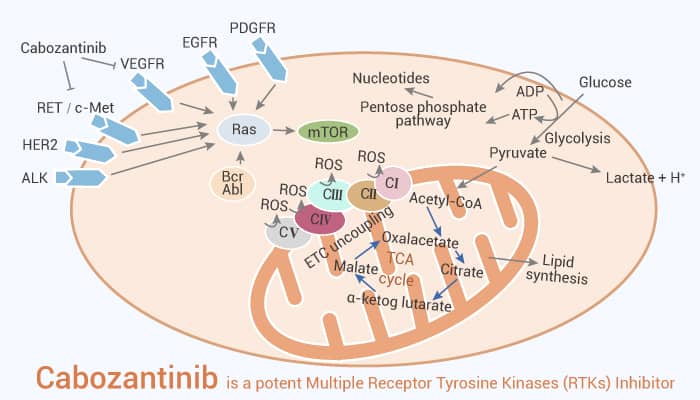Receptor tyrosine kinases (RTKs) are high-affinity cell surface receptors for many polypeptide growth factors, cytokines, and hormones. Specifically, RTKs are part of a larger family of protein tyrosine kinases. RTKs are key regulators of normal cellular processes. Besides, it plays a key role in the development and progression of many types of cancer. The mutation of RTKs leads to the activation of a series of signal cascades, which have a variety of effects on protein expression. Moreover, ligand binding leads to conformational changes of RTKs, which activates downstream signal molecules. The interaction between tumor and stromal cells regulated by RTK signal contributes to tissue remodeling, stromal cell recruitment, and activation.
Furthermore, RTKs play an important role in a variety of cellular processes, including growth, movement, differentiation, and metabolism. Therefore, the imbalance of RTKs signal will lead to various human diseases, especially cancer. Meanwhile, RTK is a single transmembrane protein expressed on various cell types, including cells in the tumor microenvironment. Overexpression (FGFR) of various types of RTK such as EGFRs, VEGFRs, PDGFRS, IGFRS, and fibroblast growth factor receptors exist in different types of cancer. Nonetheless, Abnormal RTK activation in human cancer is mediated by four main mechanisms: functional acquired mutation, genome amplification, chromosome rearrangement, and/or autocrine activation. Today, we will introduce a potent multiple receptor tyrosine kinases (RTKs) inhibitor, Cabozantinib.
Cabozantinib is a potent Multiple Receptor Tyrosine Kinases (RTKs) Inhibitor.

Firstly, Cabozantinib inhibits VEGFR2, c-Met, Kit, Axl and Flt3 with IC50s of 0.035, 1.3, 4.6, 7 and 11.3 nM, respectively. Cabozantinib inhibits KIT, RET, AXL, TIE2, and FLT3 (IC50=4.6, 5.2, 7, 14.3, and 11.3 nM, respectively). In addition, SNU-5 and hs746t cells carrying amplified met were the most sensitive to Cabozantinib. However, SNU-1 and SNU-16 cells lacking met amplification were more resistant. MDA-MB-231 and U87MG cells showed a considerable level of sensitivity to Cabozantinib.
Secondly, Cabozantinib decreases tumor vascularity, with reductions ranging from 67% at 3 mg/kg to 83% at 30 mg/kg for 7 days. In the mouse model, Cabozantinib significantly changed tumor pathology, resulting in decreased tumor and endothelial cell proliferation. At the same time, it increases the cell apoptosis and tumor growth of dose-dependent inhibition in breast cancer, lung, and glioma models.
All in all, Cabozantinib is a potent multiple receptor tyrosine kinases (RTKs) inhibitor.
References:
Yakes FM, et al. Mol Cancer Ther, 2011, 10(12), 2298-2308.